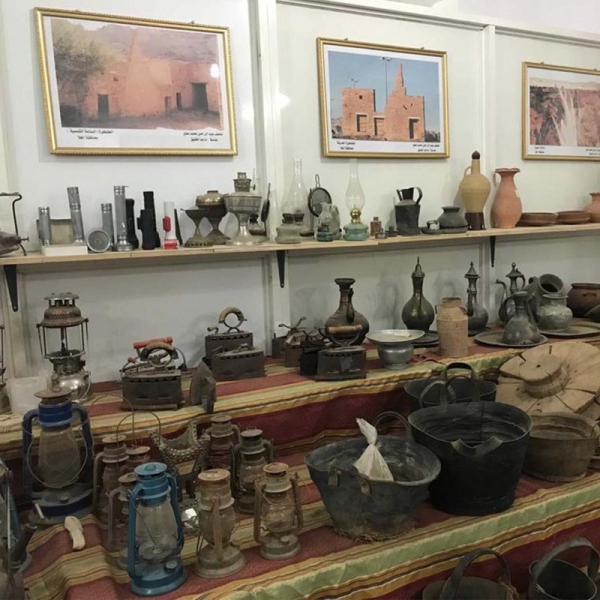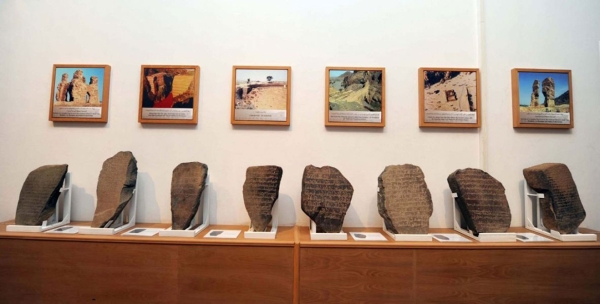

The Railway Museum, or Hejaz Railway Museum in Hejaz Railway Station, is an archaeological museum located in al-Madinah al-Munawwarah, in the western part of the Kingdom of Saudi Arabia. The museum houses a collection of artifacts and consists of fourteen halls, showcasing the history and heritage of al-Madinah al-Munawwarah from prehistoric times to the modern era.
Hejaz Railway
Construction of the Hejaz Railway began in 1900 to facilitate the transportation of pilgrims from the Levant, Asia, and Anatolia to Makkah al-Mukarramah and al-Madinah al-Munawwarah. The railway significantly reduced travel time, allowing the journey from its starting point in Damascus to al-Madinah al-Munawwarah to be completed in just five days instead of forty days.
The Hejaz Railway has a width of 1,050 mm and a length of 1,320 km. Construction of the line began in al-Muzayrib area in Hauran, Syria, and it ran parallel to the overland pilgrimage route from Damascus, passing through Daraa, and reaching the Anbariyah Station in al-Madinah al-Munawwarah, commonly referred to as the "Istasyon." The railway line starts in Damascus and then branches off from Bosra in southern Syria into two lines: one continues southward towards Jordan, while the other heads westward towards Palestine. The railway was inaugurated in 1908 and remained in operation until 1916, during the outbreak of World War I, after which it was shut down.
Location of the Railway Museum
The Railway Museum is located on Anbariyah Street, near the Prophet's Mosque in al-Madinah al-Munawwarah. The museum was established about one km west of the Prophet's Mosque, overlooking Anbariyah Square. The station and its annexes cover an area of ninety thousand m. In 1984, the Antiquities and Museums Agency of the Ministry of Knowledge (currently the Ministry of Education) took over the Hejaz Railway Station site in al-Madinah al-Munawwarah, to convert it into a museum that narrates the history of the province. The agency began restoring the old buildings
Stages of the opening of the Hejaz Railway Museum
In 1998, the Hejaz Railway Restoration Project was launched. Subsequently, the Ministry of Tourism (formerly the General Authority for Tourism and National Heritage) took on the task of converting the site into a museum. The first phase of the project was inaugurated on Monday, December 9, 2013. This phase included the implementation of museum displays in the main station building and the establishment of the Hejaz Railway Museum in the locomotive repair workshop.
The Railway Museum features a grand hall that tells the story of al-Madinah al-Munawwarah, from its pre-Islamic history, through the Prophet’s era and the period of the Rightly Guided Caliphs, up to the Saudi era. It also includes a dedicated building that displays restored trains, carriages, and the tools used by workers at the station.
The main station building of the Hejaz Railway also houses the visitors' and temporary exhibitions hall, a lecture and visual presentation hall, a handicrafts market, a museum shop, a traditional café, and the Train Restaurant, which consists of twelve train carriages serving as a family restaurant. The museum halls are used for archaeological and historical exhibitions, while its grounds are utilized for hosting cultural festivals.
Halls of the Hejaz Railway Museum
In its first phase, the Hejaz Railway Museum consists of fourteen halls that showcase the history and heritage of al-Madinah al-Munawwarah from prehistoric times to the modern era. These halls include the museum lobby, the environment and natural history of al-Madinah al-Munawwarah, al-Madinah al-Munawwarah before Islam, al-Madinah al-Munawwarah during the Prophet’s era, the wives and children of Prophet Muhammad, peace be upon him (PBUH), the Migrants, the Supporters, the Prophet's Mosque, al-Madinah al-Munawwarah during the era of the Rightly Guided Caliphs, al-Madinah al-Munawwarah during the Islamic eras, al-Madinah al-Munawwarah during the First Saudi State, al-Madinah al-Munawwarah during the Second Saudi State, al-Madinah al-Munawwarah during the era of King Abdulaziz Bin Abdulrahman Al Saud, and its civil heritage.
The second phase of the museum includes the construction of a building spanning 12,000 m, containing five halls: Al-Madinah al-Munawwarah Through the Ages, King Abdulaziz Library Collection in al-Madinah al-Munawwarah Hall, Prophet’s Mosque Collection Hall, Children's Hall, and Live Saudi Hall. These halls feature interactive digital displays using modern audio-visual technologies to portray the history of al-Madinah al-Munawwarah and its urban plans across various eras.
Related quizzes
Related articles


